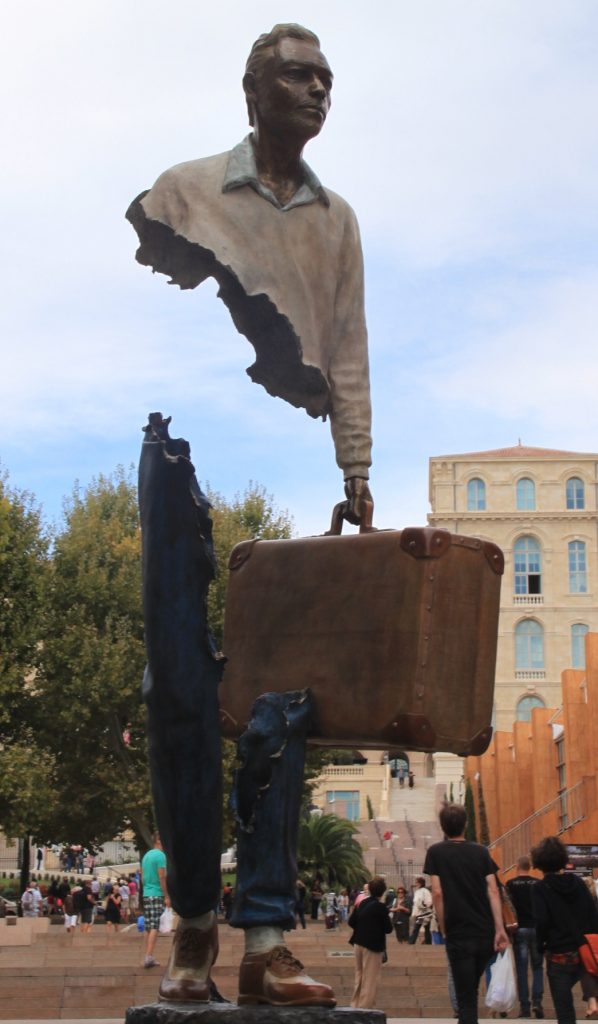
Since the beginning of the war in Ukraine, Europe has been facing the fastest growing exodus of people since World War II. It is estimated that by now there are millions of refugees who have crossed Ukrainian borders, and many more people who had to relocate within the country.
Refugees, by definition, are people who have been forced to flee their country because of persecution, war or violence. As such, stories of refugees are usually stories of loss, grief, and something valuable left behind. The stories of refugees currently fleeing Ukraine are no different, they involve long and tiresome travels to somewhere unknown, anxiety provoking memories of what has already happened, and a painful realization of leaving loved ones behind. Such stories are very well depicted in the renown sculptures by French artist Bruno Catalano – The Travelers, also known as Les Voyageurs. The sculptures of fragmented figures represent emigrants, who head with their suitcases into the unknown future, and leaving a big part of themselves behind. In physical terms there are belongings, homes and neighbourhoods that are left behind. In psychological terms, the depicted emptiness is also about a loss of identity, connections, comfort zones and, more generally speaking, a mental representation of home. It is a well-known notion that relocation and subsequent adjustment are a challenging process and even more so when relocation is involuntary and/or follows a traumatic experience back home. Given such a background, Bruno Catalano’s fragmented figures look very fragile to me, reminding us of how much empathy and kindness we ought to engage in to approach the actual ‘Voyageurs’ that cross our paths. Naturally, these notions stand true for all refugees, irrespective of their origins or destinations. The question of moral hypocrisy in respect to refugee treatment is indeed a prominent one, yet I would leave it out of this post.
Returning to the vision of the fragmented sculptures, I believe that they are truly thought provoking and allow for many more interpretations. As discussed above, one obvious way of looking at the emptiness is seeing the loss of what is left behind. This point of view provokes emotions—empathy and, hopefully, kindness. Yet, refugees are in need of actual, systemic, and effective help even more so than of emotionally compassionate reactions. In this respect, Yale psychologist Paul Bloom argues against empathy and builds a compelling case for a rational utilitarian approach to helpful acts. I would suggest that a more productive and utilitarian approach to dealing with refugee situations is more likely when we also recognize the hope, opportunities, and potential alongside the acknowledgment of refugees’ losses. What if we frame the emptiness in the sculptures as places to be filled with something new and promising? A similar notion about exile and the philosophy of uprooting was raised in an op-ed by Costica Bradatan, in which she sees exile as a blessing in disguise. The blessing of exile is in regaining the gift of sight and the curiosity of mind. As the author puts it, ‘you gain new eyes when you lose everything’.
All in all, I believe that how we view refugees, the fragmented figures, is likely complex and multidimensional, where alongside loss and emptiness there is opportunity and space… Such a narrative is depicted in the story of Syrian refugee Maskoun, who sees people like him as motivated individuals, who, when given an opportunity, can add value to any society.

